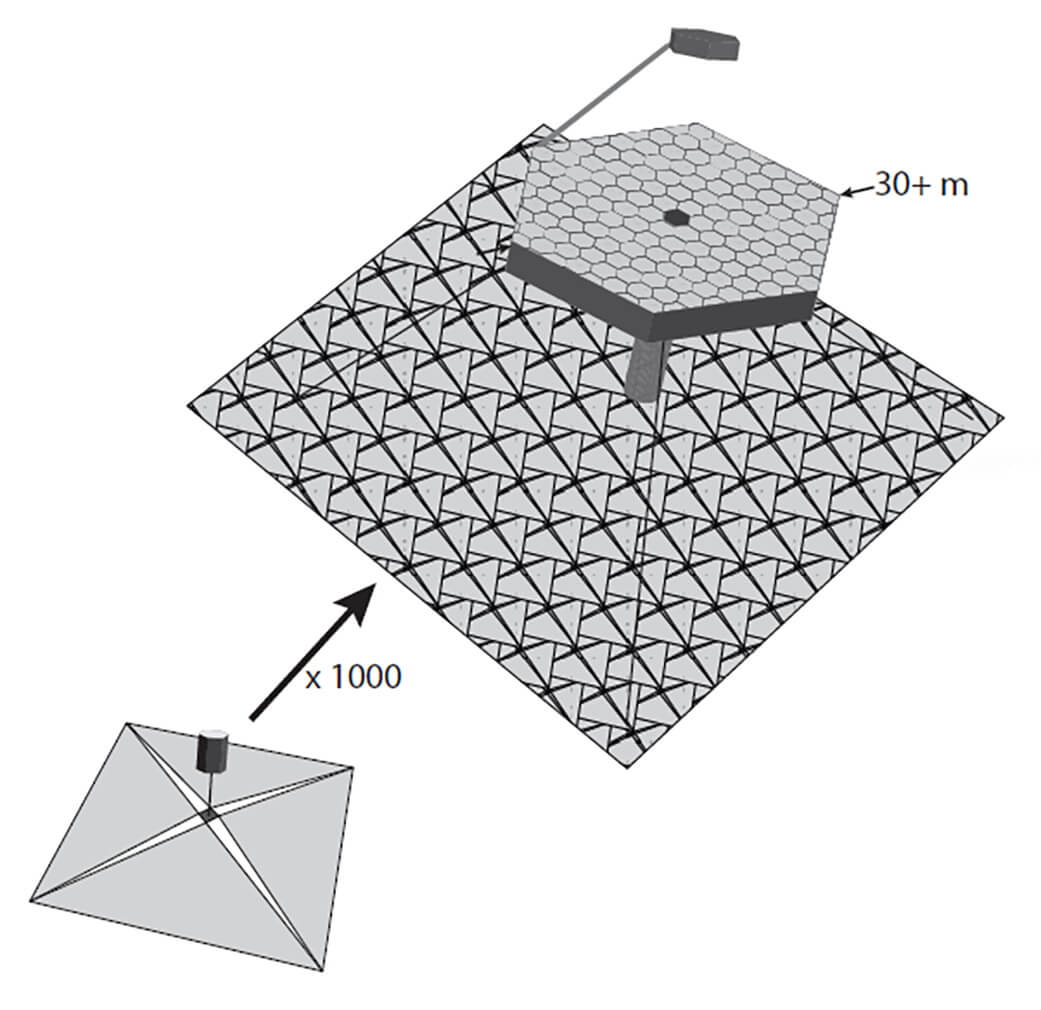
Space Agency NASA approved and provided funding for the first phase of designing a new space telescope with the mirror diameter of 30 meters. But the most interesting in this project is not even a giant the size of the device, and the feature of the Assembly. According to the plans of the telescope will be launched on different rockets and going into orbit in a single unit.
Since the time of Galileo the main enemy of ground-based astronomy was the small movements of atmospheric air, not allowing to obtain an image in fine detail. But now it has learned to deal with adaptive optics. In terms of the exorbitant cost of space launches has become easier to build the very large telescope on the Ground than to launch the tool less.
The project team Dmitry Savransky of Cornell University, refutes this opinion. As the author of the project, there is no need to run a single large spacecraft into orbit, when it is possible to send into space a lot of small.

The mirror of the new telescope will gather itself in orbit out of individual modules
Within a few months or even years to orbit will display the individual elements of the future mirror – hexagons with a size of about a meter. You do not even need to produce separate launches: every new part will start to orbit together with the other major cargo.
It is expected that each part of the telescope is provided with a space sail that will allow it to move under the action of the solar wind. Moreover, the solar sail each element together form a kind of sun screen for the new telescope. Gathered at the second Lagrange point, all these elements will connect in a huge 30-meter telescope. Size, it should be noted, impressive – not many ground-based telescopes is ready to brag about the size of its main mirror, not to mention space “kids” “Hubble”, the diameter of the mirror is only 2.4 meters, as well as new infrared telescope “James Webb” with a mirror diameter of 6.5 meters.
According to the website of the project plans, the telescope will be able to work in the infrared, optical and ultraviolet ranges.
As noted on the NASA website, the project is a 30-meter space telescope has become one of the winners of the first phase of the annual competition NASA Innovative Advanced Concepts (innovative Advanced concepts NASA NIAC). Developers allocated about 125 thousand dollars and nine months in further calculations.
Project tool Assembly of small Autonomous modules in the new era of miniature spacecraft looks so fantastic. Well, the potential of the new telescope are impressive even scientists not involved in its development.
“If the Professor savransky prove the feasibility of creating a large space telescope from tiny pieces, it will change how we explore space,” says Mason peck of Cornell University.
“We will be able to afford to see further and better than ever, maybe even see the surface of exoplanets”.
NASA has approved the design of a 30-meter-assembled space telescope
Nikolai Khizhnyak